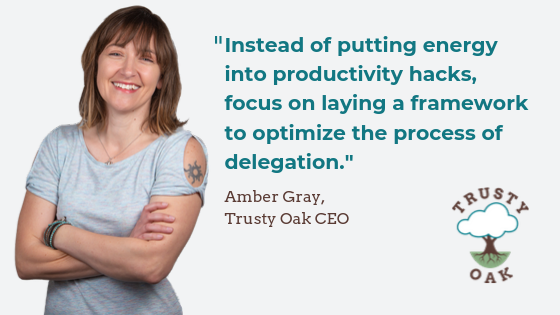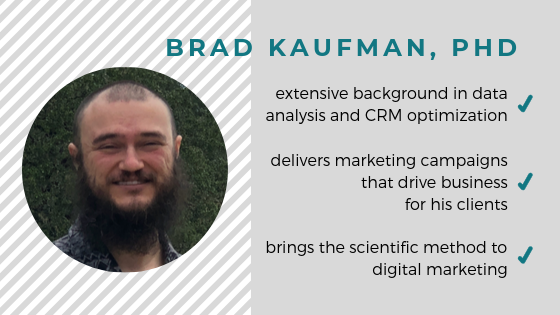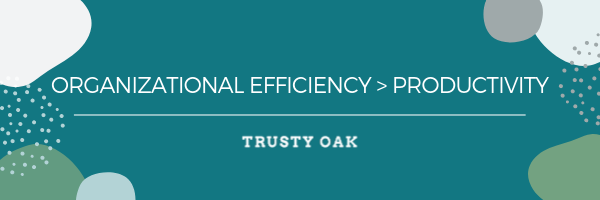Stop Trying to Be More Productive: 2 Ways to Optimize Your Business for Organizational Efficiency

I love getting things done and checking off lists, and I love helping other people do the same. (How unlikely would it be if I started a virtual assistant company without this in my DNA?) However, the truth is that I have changed my views about productivity.
I’ve decided to stop trying to be more productive.
Why I’m Abandoning the Quest for Increased Productivity
I’ve beaten myself up just as much as the next Type A person looking at their to-do list does when another day has gone by and the checklist grew instead of going away. I’ve also celebrated those days that I time-blocked on my calendar, planned every minute of my waking day, crammed in ungodly amounts of work, and still managed to swing open my home office door announcing that I am indeed actually finished working for the day and will not be pushing my dinner date out another hour (this time).
The problem is that the level of productivity I deem as acceptable—a good day—is not sustainable forever. The other problem with it is that even if I do nail it for several days consistently, I will still be looking for more ways to increase productivity yet again. I’ve realized it’s a cycle that never ends and a destination we never reach. So I’m over trying to get more productive!

But hey, I’m definitely not a quitter and that checklist isn’t there just for the fun of checking things off. (Although I’m nerdy enough to admit that checking off to-dos is kind of fun.) I have no intention to ignore it or change my goals–in fact, I plan on adding even more to the list!
Organizational Efficiency is Greater Than Productivity
I wish I could take credit for that headline but it comes from Mike Michalowicz, my favorite business book author whose personal mission is to eradicate entrepreneurial poverty. I’ve listened to three of his six books on Audible and recently caught a great interview with him on Donald Miller’s Building a Storybrand Podcast discussing his book, Clockwork: Design Your Business to Run Itself, where he dropped this little nugget of gold that got me rethinking my fight for productivity.
Lately at Trusty Oak, we have been talking a lot about automation tools and I frequently say things like “automate transactional tasks so you can personally be present for relational ones.” We truly believe that the framework for a scalable business model clicks into place when you recognize the benefits of employing the right technology and the right people. Without both parts working together, you can only grow so far.
Instead of putting energy into productivity hacks, focus on laying a framework to optimize the process of delegation.
Related: Mastering the Art of Delegation
2 Ways to Optimize Your Business for Organizational Efficiency
1. Stop Being the Bottleneck and Start Using CRM Software
If all of your customer and prospective customer information is in your email, it’s almost impossible for you to get help with getting organized or to delegate any part of your process to another person, let alone to activate an automation tool.
Alternatively, using a CRM to track and send emails, make notes about meetings or calls, store addresses, birthdays, and other important data, set reminders to follow-up and to assign tasks to other team members means that business can move forward without your overwhelming inbox becoming the bottleneck day in and day out.

A few CRMs our clients are using include:
- Hubspot CRM
- Dubsado
- ActiveCampaign
- Zoho
- Salesforce
2. Capture Your Processes as You Go by Recording Everything
I am pretty sure I jumped up and down while listening to Clockwork when Mike began explaining his tips for getting things off your plate. We have been preaching this for a long time now—record yourself doing the work and hand it off fast! This seems like it’s too simple but I have found it to be the most powerful one thing you can do right now to start preparing for a business that runs itself. Don’t worry about perfecting it, just record what you do, narrate the process as you go and hand it off.
Pro Tip: After you delegate, ask your delegatee to re-create and improve the training to keep as your SOP documentation. (Great idea, Mike!)
Screen recording apps we recommend:
For tasks that a screen recording can’t capture, try recording audio or video from your smartphone instead.
Let’s Do This!
I’m spending this week monitoring my time and classifying my tasks into categories such as Admin, Sales, Training and Mentoring, Marketing, and Business Planning.
I’ve already delegated the majority of my marketing tasks—in fact, our marketing manager just reminds me when it’s my turn to write a blog post every couple of months and even helps me brainstorm topics when I’m stuck! I also create one video per month for our newsletter. And we have social media content going out on all platforms at least five times per week, 2-3 blog posts per month, and even create other standalone content from time to time—all of which takes almost none of my attention.
My goal is to get more time for Business Planning and Sales and far less in Admin (such as processing payroll each week). I’ve started documenting more of my admin tasks using Loom and identified people I can delegate these tasks to in the near future.
Make an effort to become more aware of what tasks are taking your attention each day and week and start documenting those tasks that are keeping you from revenue-generating tasks. Delegation is the key component for scaling your business without requiring you to be more productive.



